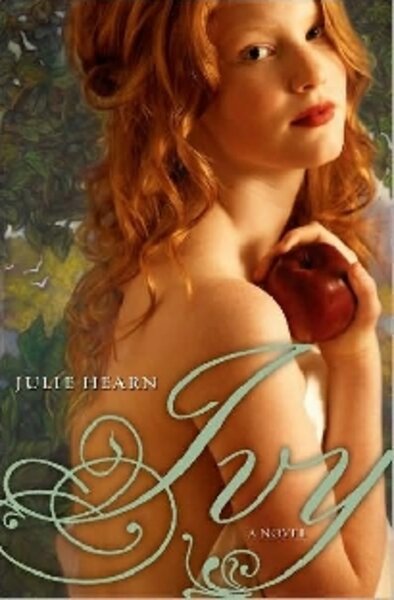Ivy
Loading...
If you’re going to be an orphan in a book, chances are you’re plucky, unfairly downtrodden, and live during the 19th century. If you can manage to have red hair, well, that’s just a bonus.
Although Ivy, carrot-topped hero of the new novel by Julie Hearn (“The Minister’s Daughter”), grew up in a London slum that might have scared the Artful Dodger with a family that would have cheerfully stolen Oliver Twist’s gruel right out of his bowl, she’s actually a little short on pluck. How she acquires a sense of self-worth is one of the pleasures of this witty, take-no-nonsense novel for teens.
We first meet the 5-year-old waif, uncomfortably ensconced in the bosom of her family, during a hilarious opener when two fine ladies come do-gooding in her neighborhood, “picking their way along filthy streets, the hems of their crinolines blotting up slush and the beads on their bonnets tinkling like ice.”
Mrs. Hortense Merryfield and Mrs. Constance Larrington get conned by Ivy’s older cousin Jared (and learn that gigantic crinolines and narrow alleyways are not a happy combination). In the process, they also decree that Ivy and her cousin Orlando will go to charity school.
Ivy lasts one morning, after which she decides she’s had enough of book learning and heads out – only to be waylaid by Carroty Kate, a “skinner” who steals the clothes off wealthy children’s backs. Kate kidnaps Ivy to work as bait to lure the rich kids away from their nannies. Despite her horrifying occupation, Kate is kinder to Ivy than her family ever was – except that she doses the little girl’s milk with laudanum at night to keep her from crying.
Then the plot jumps 10 or so years, where the teenage Ivy, again living with her family, is working as a flower girl and sleeping away her life under the influence of the laudanum, trying to forget her last days with Kate and the rest of Fing Nolan’s gang. (Her cousin Orlando is now an aspiring poet who writes precious odes such as “A Fallen Woman Dying of Consumption Contemplates Her Ravaged Features” for himself and, for money, pens epitaphs and lurid poems where he rhymes things like “Eek! Eek!” and “ghastly freak.”)
Ivy is also, in the words of aspiring painter Oswald Frosdick, “a stunner.” He promptly hires her as his model, much to the dismay of his mother, who doesn’t appreciated being ousted as her son’s muse, and his neighbor, Victorian artist and poet Dante Gabriel Rossetti, who famously had a thing for redheads and would like to paint Ivy himself. (Rossetti’s pet armadillos also trundle in to make a memorable cameo.)
Oswald determines to paint Ivy as Eve, complete with five-foot python. After a couple of attempts to get Ivy out of the way go comically awry, Mrs. Frosdick settles in for one final serious attempt. Ivy, meanwhile, manages to wean herself off the drug and, clear-headed, tries to figure out what she wants to make of her life.
Hearn carefully lines up a host of 19th-century romantic tropes, takes aim with her wit, and sends them all spinning. It’s also refreshing reading a novel aimed at teenage girls where true love isn’t the ultimate prize waiting at the end of an adventure.
(Not that I’ve got anything against romance, but an exclusive diet can send you into sugar shock.)
In an afterword, Hearn explains that she was inspired to write “Ivy” because she wanted to give a happy ending to Lizzie Siddal, Rossetti’s wife and an artist in her own right, who died of an overdose of laudanum. The one she comes up with for Ivy is sure to make readers smile.
Yvonne Zipp regularly reviews fiction for the Monitor.






